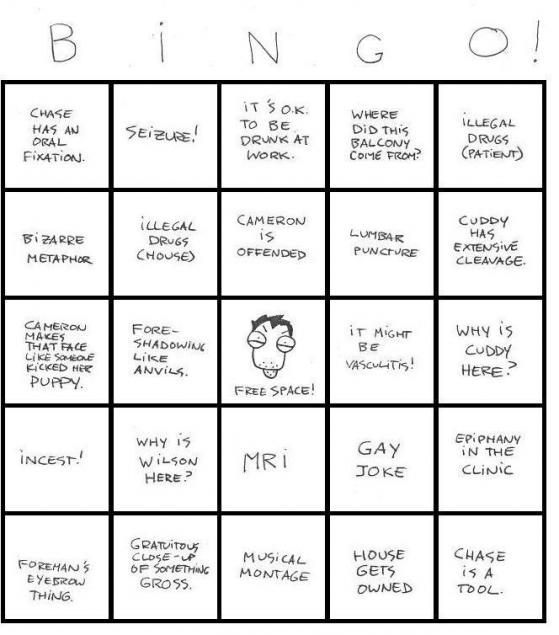Serendip is an independent site partnering with faculty at multiple colleges and universities around the world. Happy exploring!
story telling

House M.D. :Down the Rabbit Hole
Play House Bingo while reading our script!

From: http://users.livejournal.com/_thickasabrick/3867.html
Here is the script for our performance today of House M.D.

broken?
As was (I think) suggested in class today, I watched the last episode of Season 5 of House ("Both Sides Now"), in which House overdoses on Vicodin, hallucinates most of the episode's events, and is finally checked into a psychiatric hospital, and moved on to the first episode of Season 6 ("Broken"), which follows House's adventures in detox and then in the long-term psychiatric ward.







